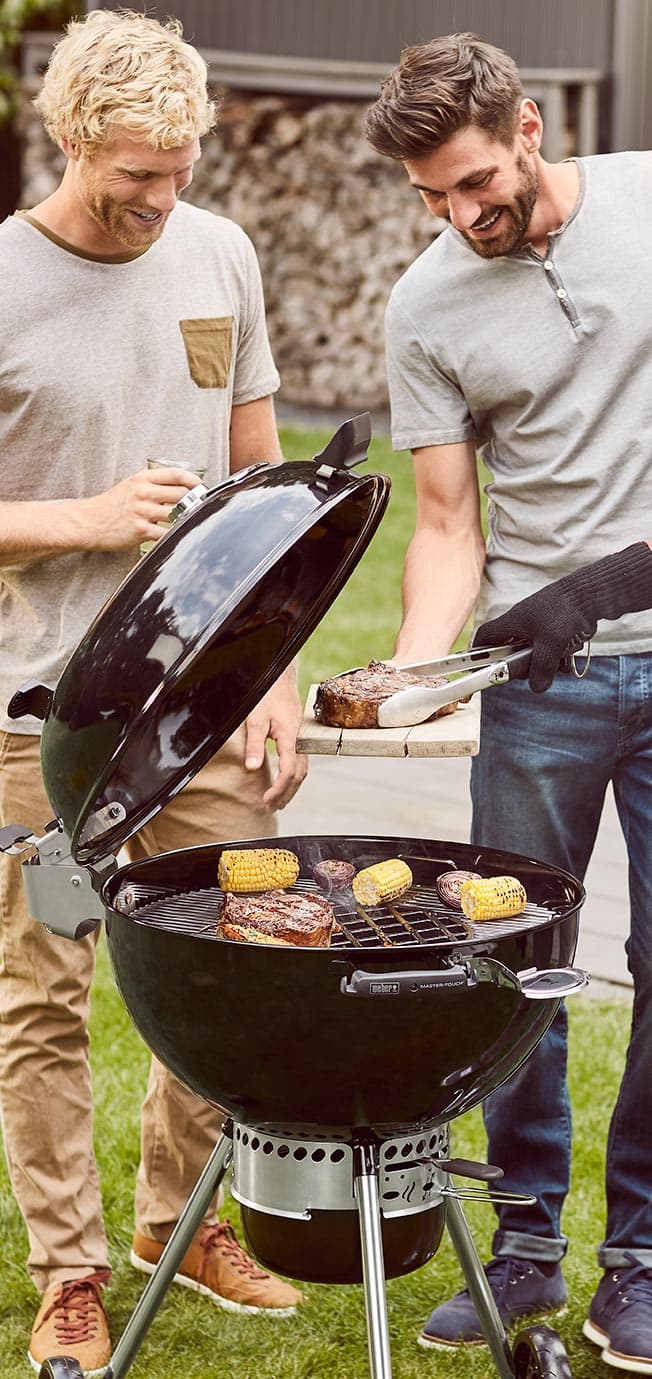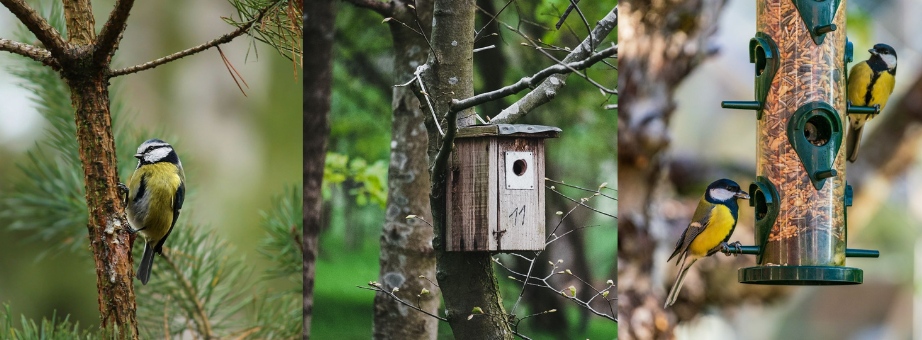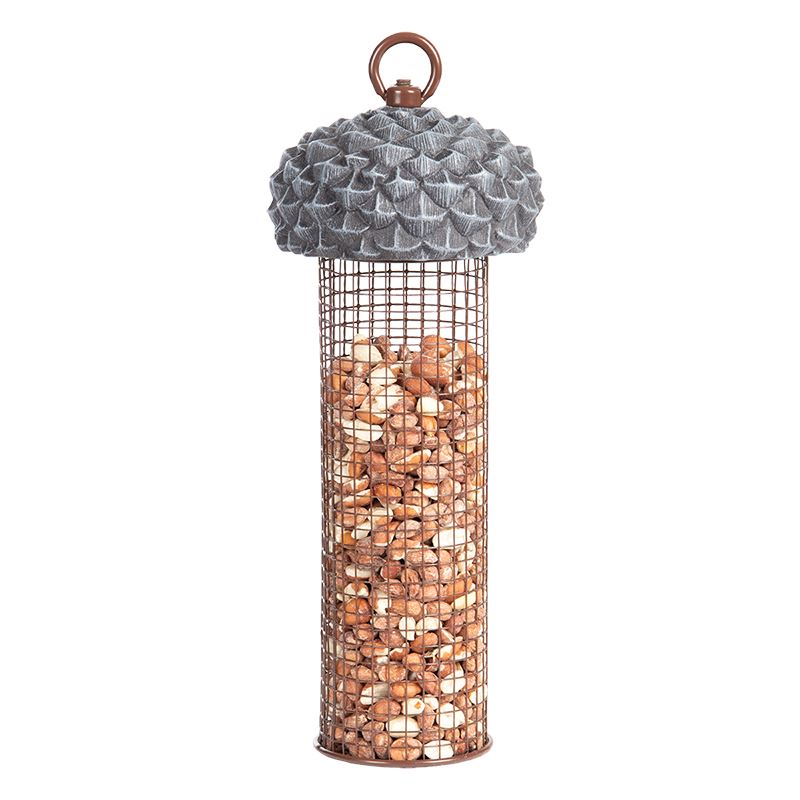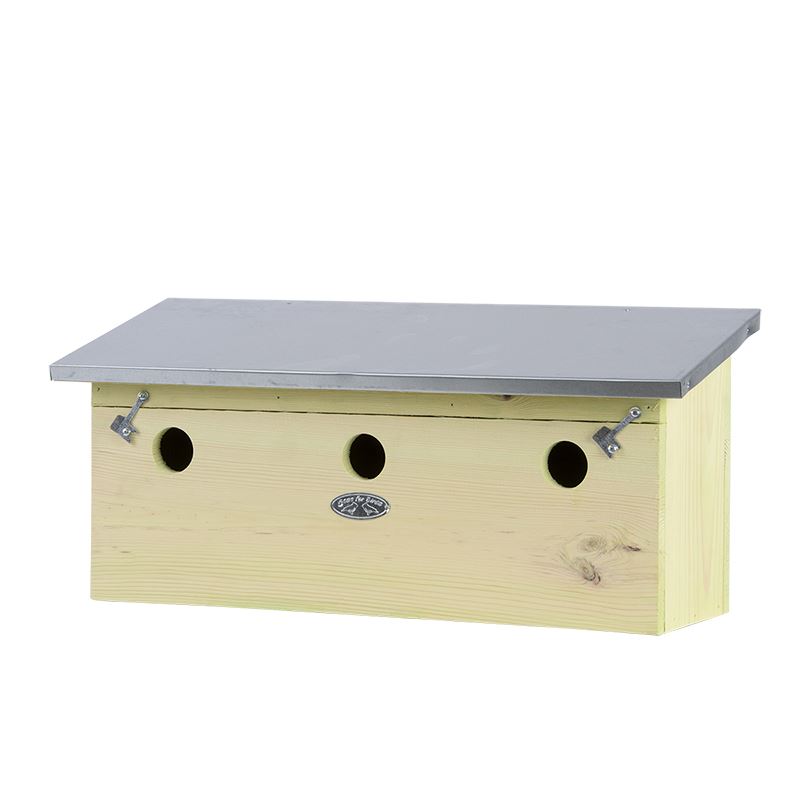Every bird eats as it is beaked
And you can take that literally because the bird's beak reveals its favourite meal! For instance, birds with a pointed & long beak slurp up lots of earthworms, birds with a cone-shaped beak feast on crunchy seeds & kernels and birds with a thin beak prefer insects.
Thanks to our handy tips, you don't have to go and observe the beaks of garden birds, but know what's on the menu for each species.
• The tit
Blue tits are eager for high-calorie fat balls, which are packed with nutrients! Choose suet balls without a net, so the birds don't get their feet tangled in the plastic!
• The robin
Robins love protein-rich mealworms, fine wild fodder and breadcrumbs. Beware: do not feed your leftover bread to garden birds. This comes from the best of intentions but our bread is often rich in salt & sugar, which is not healthy for birds. Choose special breadcrumbs suitable for garden birds!
• The woodpecker
Let's go (pea)nuts with the woodpecker, because peanuts are this garden bird's absolute favourite! Sling-shaped peanuts, peanut butter, unsalted peanuts, peanut cakes.... They are welcome in any form! As with the bread, here it's better to choose a peanut butter variety specifically for garden animals.
• The sparrow
Sparrows are only too happy to pick up sunflower seeds. Is there a spent sunflower in your garden? Then string it up and hang the flower in your garden. It will certainly be visited by the sparrows! Breadcrumbs & scatter food are also enjoyed by these garden birds.
• The blackbird
The blackbird has a very versatile diet. It likes to gulp down earthworms from the lawn, but an escargot will go down well too! Want to help the blackbird during the cold winter months? Then serve it some sweet sultanas, apples & pears as it has a real sweet tooth! Bushes with berries are also frequented by this feathered friend.

DIY-tip van Marcel: maak zelf mezenbollen!
Met wat strooivoer, gedroogde meelwormen, knapperige pinda's en een blok frituurvet maak je lekkere, voedzame snacks voor de tuinvogels. Ook leuk om de kleinsten bezig te houden en de tuin in te krijgen!
Zin om aan de slag te gaan? Klik hier voor de DIY!
Here's how to choose the perfect spot for the feeder!
• Hang the feeder high up on the branches of trees or a feeding station so that house and neighbourhood cats cannot reach it! The perfect spot is near bushes or trees with prickly leaves or thorns.
• Keep the feeding station clean so that no pests come and make the birds sick.
• Also, always remember to provide a bowl of fresh water! Especially during the frosty months, it is difficult for birds to find fresh water when birdbaths, fountains & ponds freeze over.
All birds shelter!
Would you like to offer your winged friends a warm home? Then give our beautiful nesting boxes a nice spot in your garden!
A nest box provides a safe nest for eggs & bird chicks during spring. It also provides a safe & warm hiding place for birds during the winter months. Moreover, this way the garden birds already become familiar with their nesting box and surroundings, which increases the chances of a nest (and thus expansion) in spring! So your nesting box comes in handy all year round!
A box for every bird
There is a lot of diversity among garden birds. They are distinguished from each other not only by the different colour pattern of their beautiful feathers, food preference or song, but of course also by their size. When choosing your nest box, keep in mind which birds frequent your garden & which ones you would like to attract to your garden.
For example, a birdhouse with a 28 mm opening is ideal for small tits (the blue tit & black tit) and flycatchers. In turn, a birdhouse with a 32 mm opening accommodates larger tits (such as the great tit and crested tit) and the nuthatch. Fortunately, there are also nesting boxes with an adjustable opening, so everyone feels at home!
By the way, did you know that many birds like to coop together under one roof? That way they are extra warm and there is always someone on guard. That is why you will also find various villas in our range, including the sparrow villa.
Here's how to choose the perfect spot for the birdhouse!
• Hang the nest high up on the branches of trees so that domestic and neighbourhood cats cannot reach it! Ideally near shrubs or trees with prickly leaves or thorns.
• Find a quiet spot, preferably not facing south. That way, the nesting box will not hang in full sun at the hottest time of day.
• Make sure the entrance is draught-free by orienting the hive northeast.
Neat and tidy
It is important to clean the nesting box thoroughly twice a year: before autumn (September/October) and after the breeding period. Always use gloves for this as parasites, such as fleas & feather lice, may hide in the nest box. Clean the hive with some hot water and a brush. Never use cleaning products!
Don't forget those other garden animals, too! 🦔
Not only the birds want to get a piece of the pie in your garden or seek shelter in the hedge, even the hedgehog seeks out the messy corners of your garden for shelter. Thanks to our tips, your garden will be a colourful place!
• Create your own hedgehog-friendly garden
































